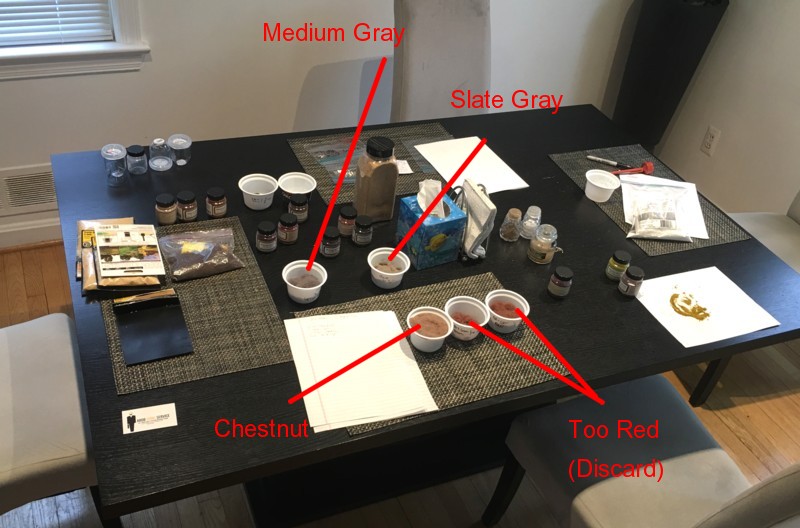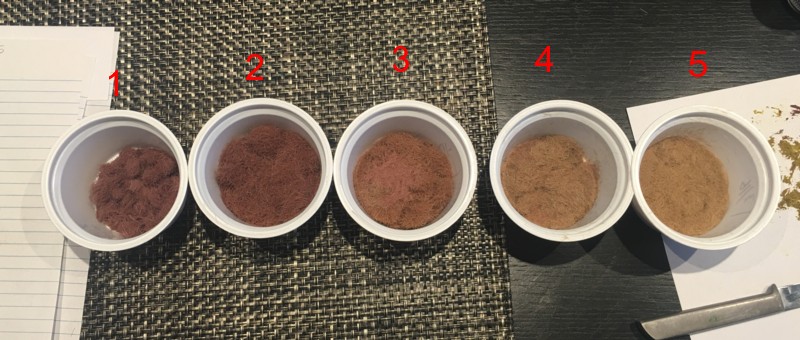
There has been a lot of interest in my earth tone static grass experimentation. At this point I have it dialed in enough to pass on the techniques. Before I get started, I want to emphasize that this process is extremely simple and the materials very inexpensive. It will take me longer to write this than it will for you to prepare the bath. Essentially we are putting Woodland Scenics Straw colored static grass in a pot of water with dye in it, waiting an hour, then rinsing it out. Powdered dyes are tricky so I suggest not going “free range” on color mixing at first since I’ve already spared you the agony of that long process. We’ll be using Proceon MX dyes and Woodland Scenics 4mm Straw Static Grass pn FS620. Other lengths and makes of grass will not react the same with the dyes so be careful (The exception being Woodland Scenics 7mmn FS 624 which tested fine).
So far I’ve dialed in two useful colors, a pale slate gray and chestnut brown. You’ll need: A stove pot, non-iodized salt (grocery story), a thermometer, Jacquard Procion MX dyes: Neutral Gray, Chocolate Brown, and Bright Green. These can be found at a good art supply store or obtained from Dick Blick. You’ll also need soda ash and Syntrapol ( a soap). Both are cheap and easily found at Dick Blick.
For the slate gray. Put three cups of water in the pot and dissolve in 3 tablespoons of non-iodized salt. Warm up to 105 degrees. Pour in 1/8 teaspoon of Neutral Gray and mix it into the water. Pour in half a bag (20 grams) of the Woodland Scenics Straw colored static grass and stir it in. Let it sit for 20 minutes. Add 1/2 tablespoon of soda ash, stir it in, let stand another 30 minutes. That’s it. Now we need to rinse it. Pour everything through a strainer and then rinse back and forth between the strainer and pot until the water runs clear. A drop of Synthrapol helps rinse things out. Squeeze the ball of dyed static grass dry in your hand, dump it in old pillow case, knot it, and stick it in the dryer.
Browns are much tougher as the Proceon Chocolate Brown has a red component that….just…..won’t…..give up the fight. Knocking it down was a battle and involved a heavy sledge hammer of green to bring it back to a truer brown. To get a brown that doesn’t have a rose/boxcar red color cast we need to work up a custom dye powder mix. Take out a sheet of paper and, using your measuring spoons, put three mounds of Brown on the paper and two mounds of Bright Green. In other words we want a 3:2 mix very heavy on the green. Mix the powders together with a knife blade. Using a knife fill 3/16 of teaspoon (1/8 tsp then half of 1/8 tsp) with your Brown/Green mix, pour it in your 3 cups of water and follow the procedure just explained for the gray.

My next experiment will be an attempt to add some “muddiness” to the color via Proceon’s “Warm Black”. Stay tuned.